
Estonia - Narrow gauge train museum in Lavassaare
For a full scale picture, please click on the picture shown !

Estonia just like the two other Baltic states Latvia and Lithuania all had extensive narrow gauge rail networks during
Soviet Union times. Not much is left. At Lavassaare, just north of the city of Pärnu in southern Estonia, where there used to be
very extensive turf transport narrow gauge networks, there is today a narrow gauge railways museum, with locomotives and coaches
collected from all over. This example is a class TU2 locomotive from the Soviet times. To see a TU2 still in operation, please see this same
railpics.club photo archive at Latvia -> Aluksne-Gulbene narrow gauge museum railway. Picture in Lavassaare 10.6.2013 by Ilkka Siissalo.
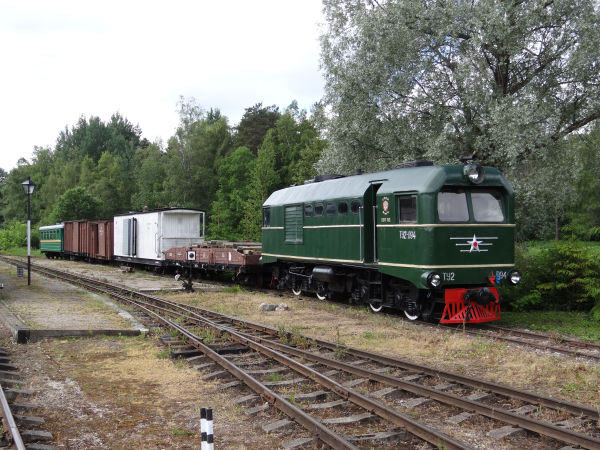
Another TU2. This one has been beautifully restored to its Soviet time colours and emblems.
Picture at Lavassaare 10.6.2013 by Ilkka Siissalo.
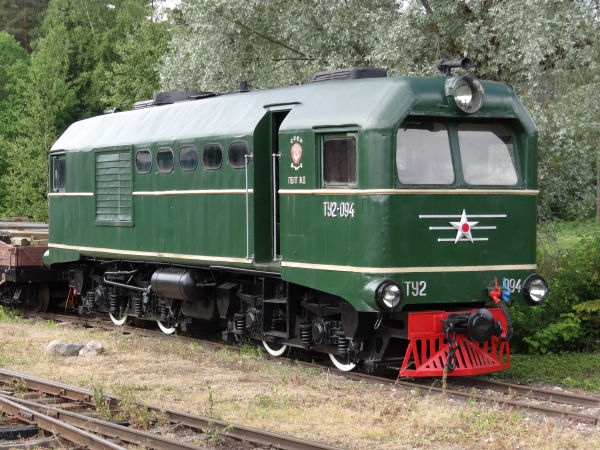
A closer look at the same TU2.
Picture at Lavassaare 10.6.2013 by Ilkka Siissalo.
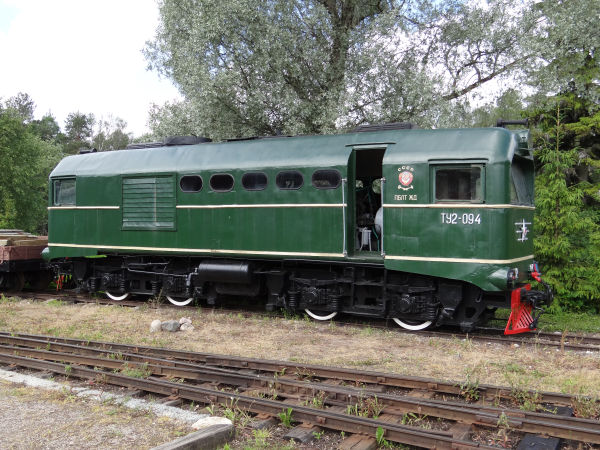
Side view of the same TU2.
Picture at Lavassaare 10.6.2013 by Ilkka Siissalo.
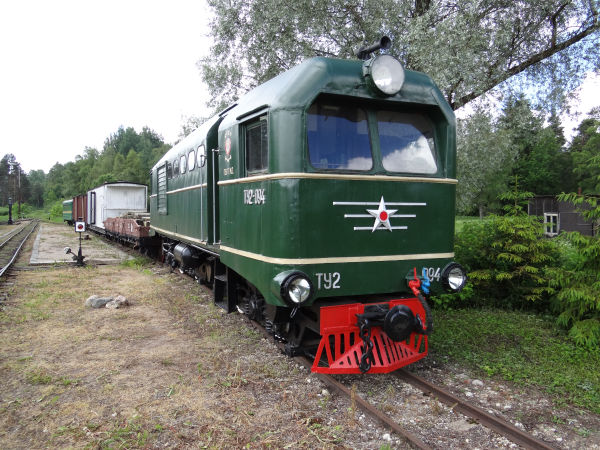
Still another view of the same TU2.
Picture at Lavassaare 10.6.2013 by Ilkka Siissalo.

The class TU3 750 mm gauge locomotive was built by Škoda in Czechoslovakia 1954-58 and was in use in the Baltic railways until
early 1970s. These machines are rare, since only 45 were produced. Picture at Lavassaare 10.6.2013 by Ilkka Siissalo.
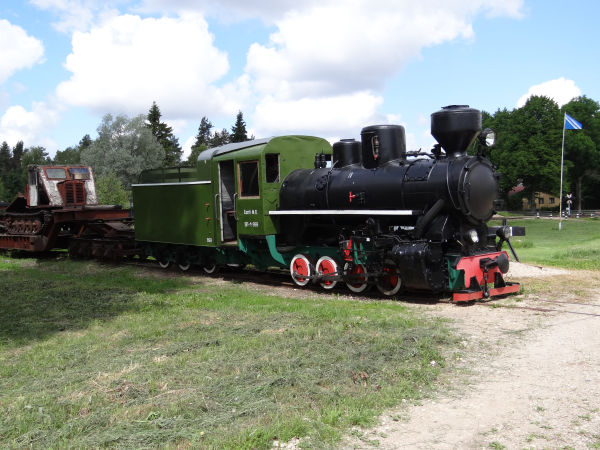
These steam engines, which in Estonia were called class VL-1 (VL for Vladimir Lenin) were developed by the Russian Kolomensk
factory. After the war Russians forced many other countries also to produce these same locomotives and deliver them free of
charge as war reparation payments to the USSR. These were produced in Russia (their class VP), Czechoslovakia (class KCh),
Finland (class PT4), Poland (class Kp4) and Hungary (class Kv4) in 420 copies, which operated not only in the USSR, but also
in Poland and China. Picture of a VL-1 at Lavassaare 10.6.2013 by Ilkka Siissalo.

Another view of the same class VL-1 steam engine. Picture at Lavassaare 10.6.2013 by Ilkka Siissalo.
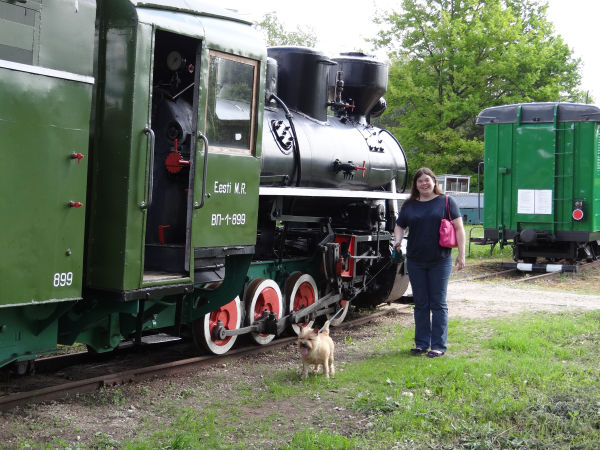
Train photographer Sanna Siissalo and train spotter dog terrier Mei inspecting the beautifully restored class VL-1
locomotive. Picture at Lavassaare 10.6.2013 by Ilkka Siissalo.
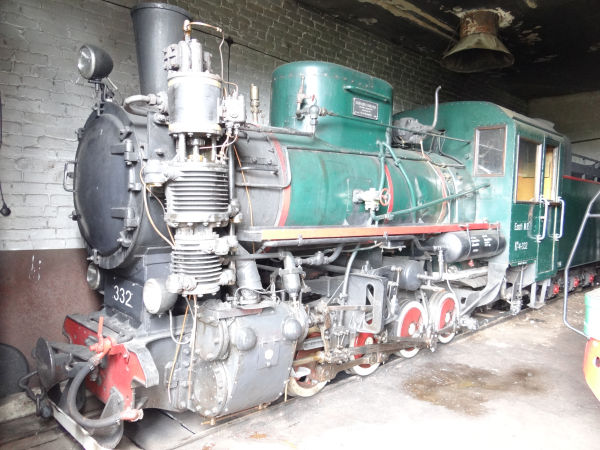
This is a class Kch4 locomotive, which is essentially identical to the VL-1 above, but this one is built by Škoda
in Czechoslovakia and therefore it has some minor differences. But it nevertheless is one of the war reparation payment steam locomotives.
If you have a look at this picture archive under the category Latvia -> Aluksne-Gulbene narrow gauge railway, you will find a picture
of exactly this same locomotive from the time when it was being repaired at Gulbene in Latvia. Picture at Lavassaare 10.6.2013
by Ilkka Siissalo.
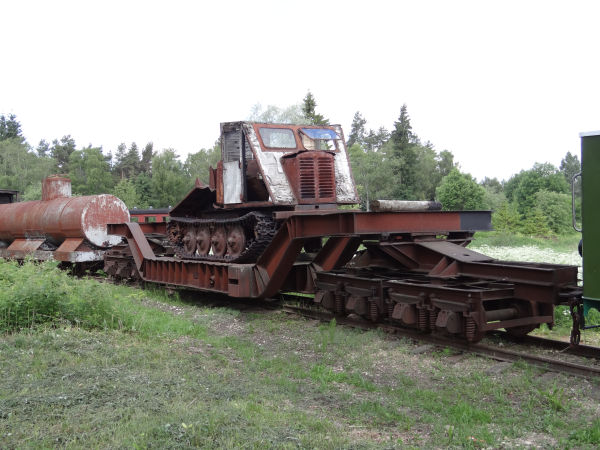
It is an old military tank, modified for heavy hauling duties. These were used all over USSR for example in case of railway
derailings to clear the tracks and haul derailed wagons or locomotives up. Tanks of types T-34 and T-54 were often used as
starting points. Picture at Lavassaare 10.6.2013 by Ilkka Siissalo.
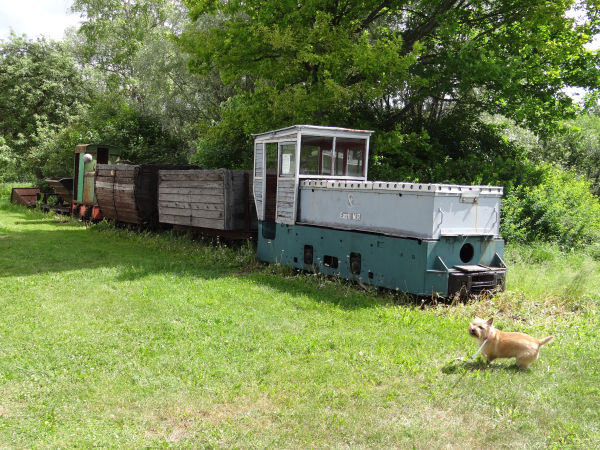
Near Lavassaare there are enormous bog or marshlands where large amounts of turf were collected for mainly heating purposes using 750 mm
gauge turf railroad trains. But steam locomotives were not very well suited for this purpose, since they easily spread wild fires due to
sparks out of their chimneys and bog land turf when it catches fire is notoriously difficult to extinguish. This is an electric locomotive
driven by batteries to run on the difficult bog land rails. Picture at Lavassaare 10.6.2013 by Ilkka Siissalo.
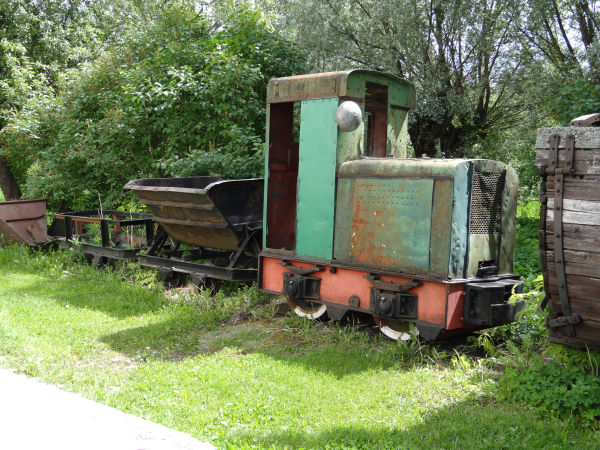
It's difficult to verify, but this one looks like it would be a pre-WW II German so called Heeresfeldbahnlok or military narrow gauge
engine. Anyway it has clearly had a long service life at the marshlands around Lavassaare. Picture at Lavassaare 10.6.2013 by Ilkka Siissalo.
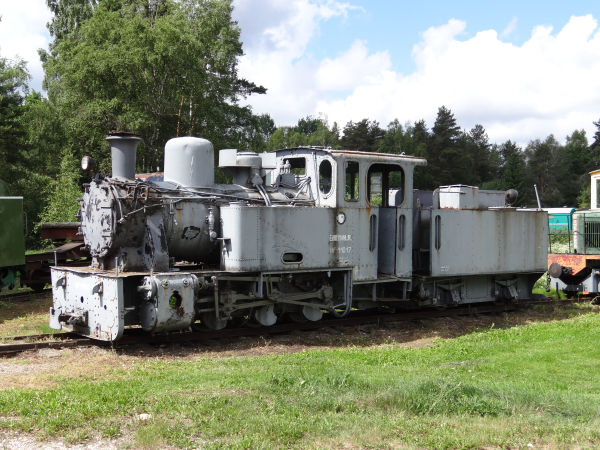
Class HF-110 steam locomotive. Also these were German military machines, so called Heeresfeldbahnlokomotiven. This is one of the World
War II time Kriegsfeldbahnlokomotiven class HF110C machines built by Henschel in Germany. Picture at Lavassaare 10.6.2013 by Ilkka Siissalo.
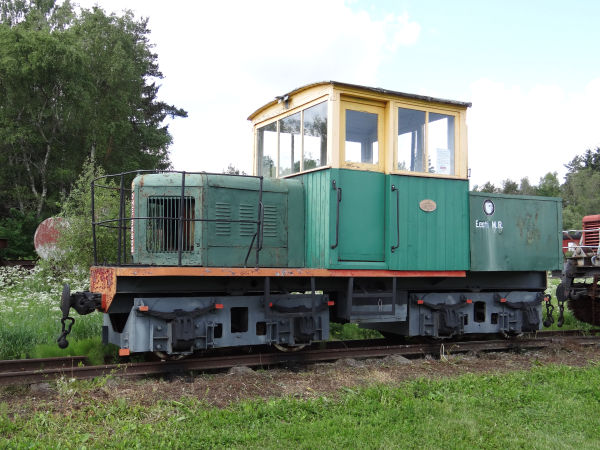
A class MUZ-4 narrow gauge logomotive of 750 mm gauge. These were built since 1949 in Petrozavodsk at the Onegzavodsk plants in Carelia.
The Onega factories were once famous for their tractor production, but during WWII they were a military plant producing artillery and tanks.
Picture at Lavassaare 10.6.2013 by Ilkka Siissalo.
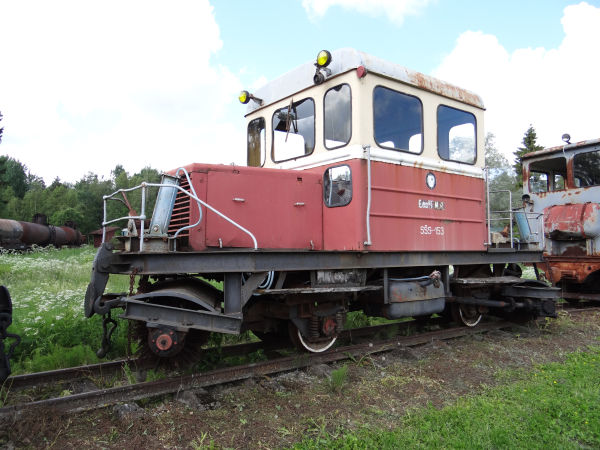
A class SŠS 750 mm gauge rail tractor intended especially for track cleaning purposes.
Picture at Lavassaare 10.6.2013 by Ilkka Siissalo.
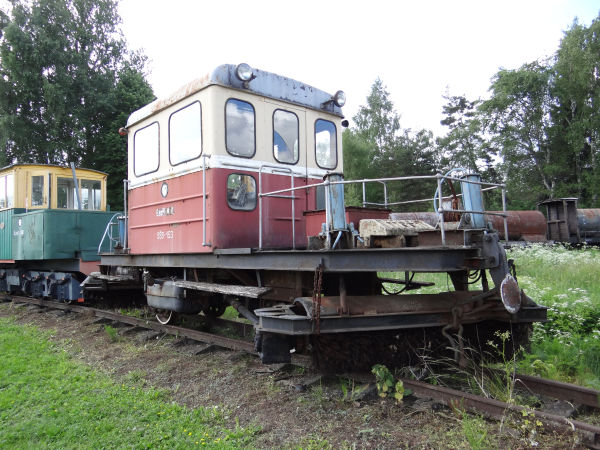
Another view of the same class SŠS 750 mm gauge rail tractor. In the background the same MUZ-4 pictured above.
Picture at Lavassaare 10.6.2013 by Ilkka Siissalo.
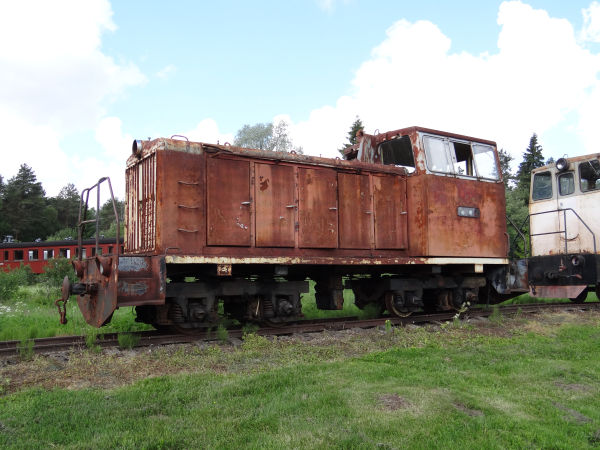
A class TU-6A locomotive in a pretty bad shape. These were once very common locomotives in front of both passenger and cargo trains
on the numerous Baltic 750 mm railways. They were built by the Kambarka engineering works in USSR 1973-1988, so they are still fairly modern.
Picture at Lavassaare 10.6.2013 by Ilkka Siissalo.
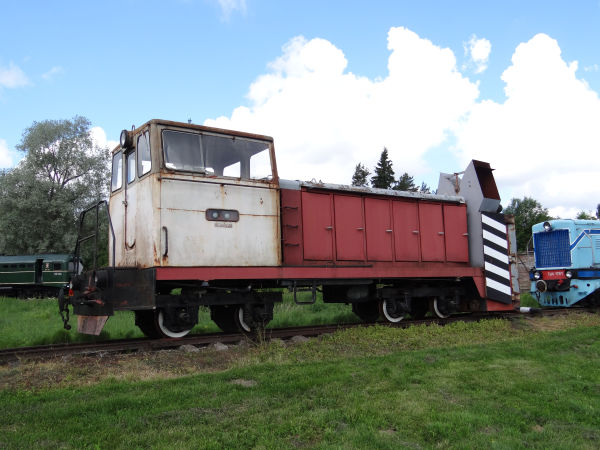
Another TU-6A, but this time permanently fitted with a snow blower.
Picture at Lavassaare 10.6.2013 by Ilkka Siissalo.
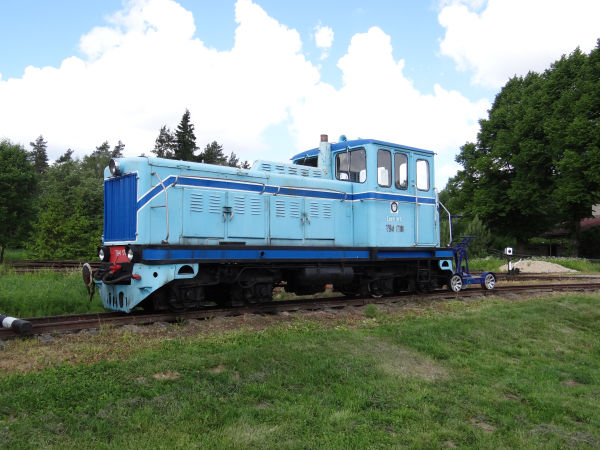
A class TU-4 diesel locomotive. They were built 1962-1973 by the Kambarka engineering works. Its maximum speed was 50 km/h.
Picture at Lavassaare 10.6.2013 by Ilkka Siissalo.
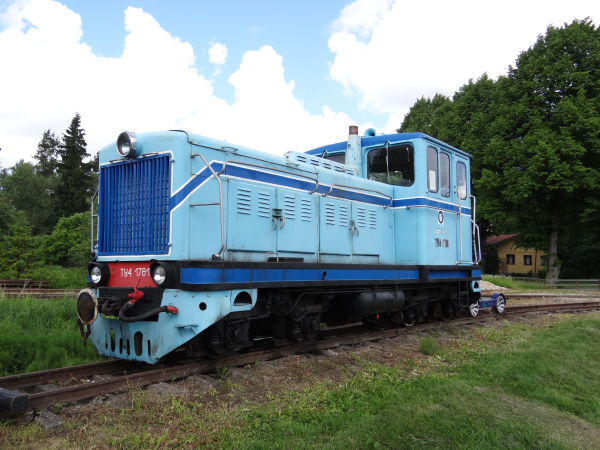
Another view of the same TU-4.
Picture at Lavassaare 10.6.2013 by Ilkka Siissalo.
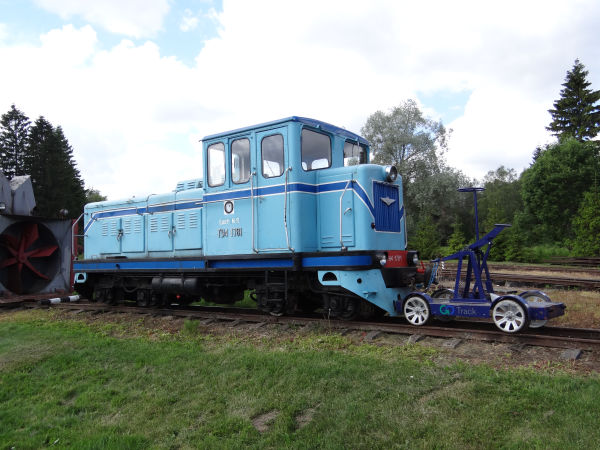
The same TU-4 seen from the other side. (The blue GoTrack draisine is not part of the locomotive.)
Picture at Lavassaare 10.6.2013 by Ilkka Siissalo.
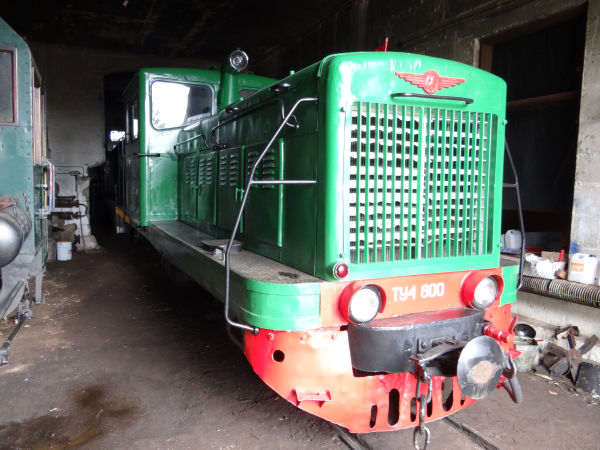
Another TU4, but this one in prime working condition and parked in a stable.
Picture at Lavassaare 10.6.2013 by Ilkka Siissalo.
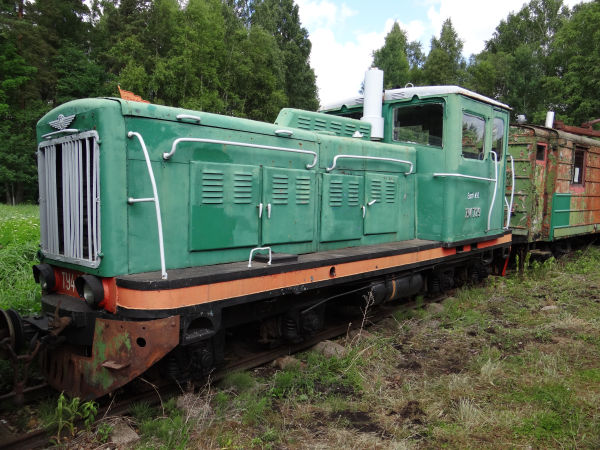
Yet another TU4.
Picture at Lavassaare 10.6.2013 by Ilkka Siissalo.
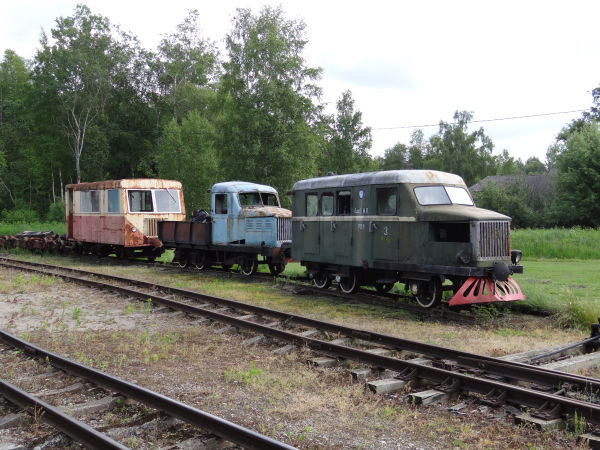
Soviet era railcars of 750 mm gauge.
Picture at Lavassaare 10.6.2013 by Ilkka Siissalo.
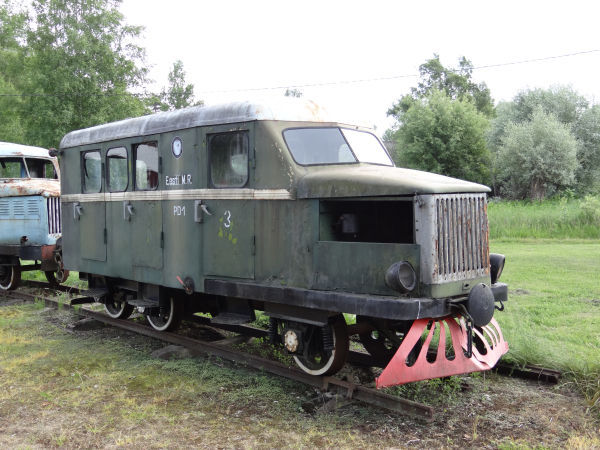
A class PD1 railcar. These were often used for transporting workers to the open bog lands for peat collection.
Picture at Lavassaare 10.6.2013 by Ilkka Siissalo.
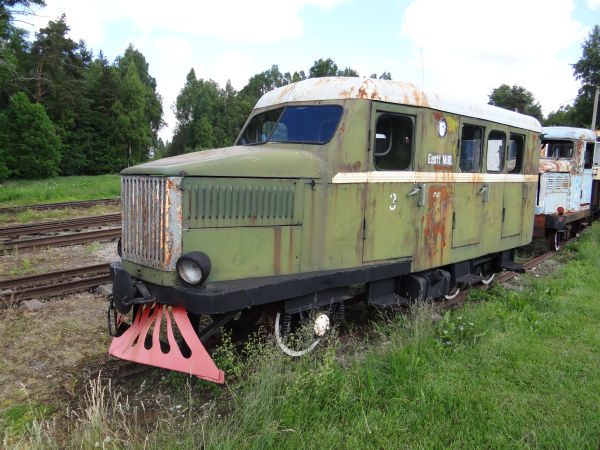
Another view of the same PD1 railcar.
Picture at Lavassaare 10.6.2013 by Ilkka Siissalo.
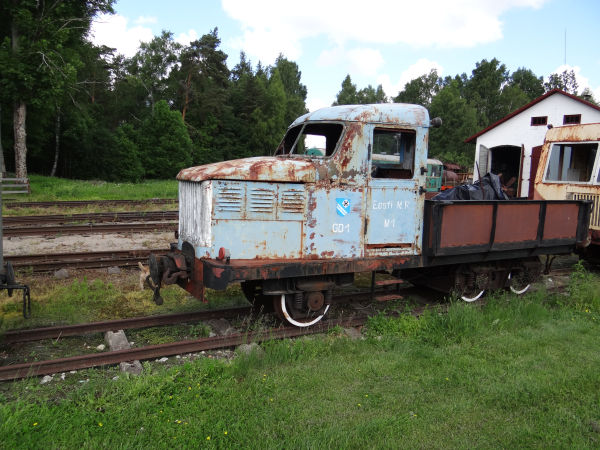
The class GD1 rail truck is almost similar to the PD1 railcar shown above, but a goods transport version.
Picture at Lavassaare 10.6.2013 by Ilkka Siissalo.
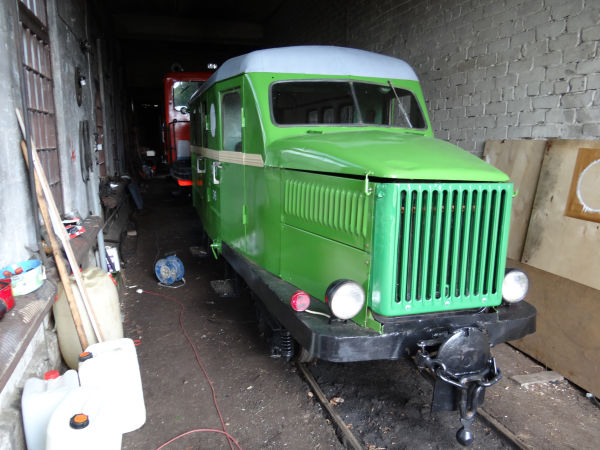
This one according to its paintings is a class CMD-1 railcar, but it looks exactly like the PD1 pictured above, except for the
doors at the sides.
As these pictures were being taken in 2013 it was right then being repainted to a bright green livery at the stables in Lavassaare.
Picture at Lavassaare 10.6.2013 by Ilkka Siissalo.
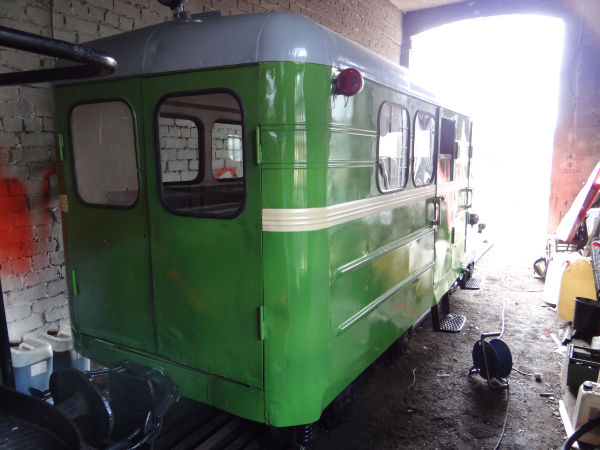
The same CMD-1 but seen from behind.
Picture at Lavassaare 10.6.2013 by Ilkka Siissalo.
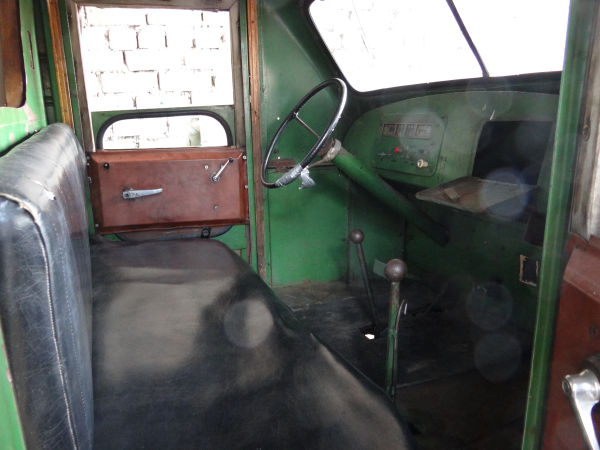
Driver's seat of the same CMD-1.
Picture at Lavassaare 10.6.2013 by Ilkka Siissalo.
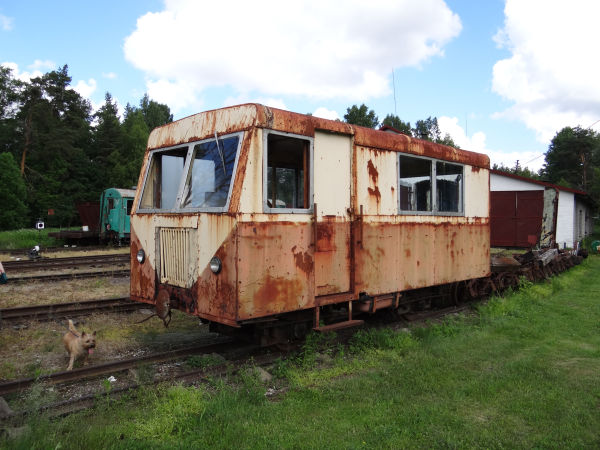
If anyone knows what this railcar used to be, please let us know. No recognition markings could be found. The chief editors' email
address is on our front page.
Picture at Lavassaare 10.6.2013 by Ilkka Siissalo.
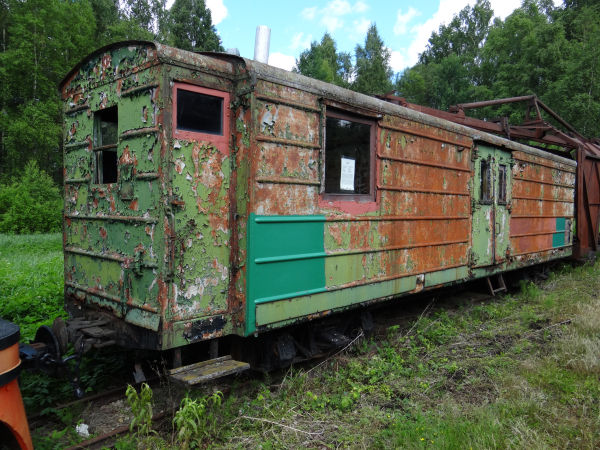
An old parcel and cargo wagon from the Estonian narrow gauge railroads. This is based on an old German coach which had been throughly
rebuilt in 1952. Only the undercarriage remained from the old German coach. It has been last throughly serviced in 1957.
Picture at Lavassaare 10.6.2013 by Ilkka Siissalo.
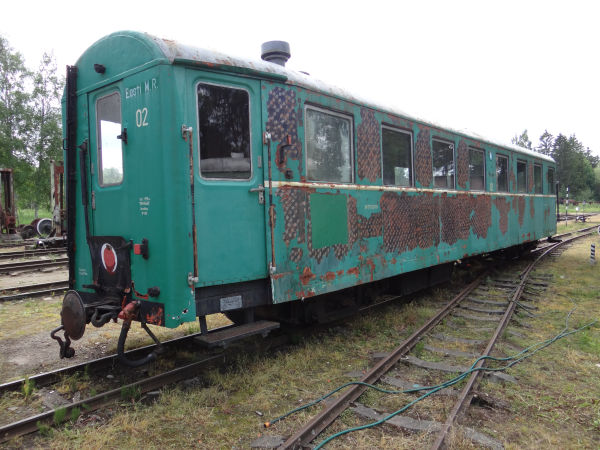
An old coach of the type 3aW from the Polish company Pafawag in Wroclaw (Breslau), built in 1959 and now being rebuilt.
Picture at Lavassaare 10.6.2013 by Ilkka Siissalo.
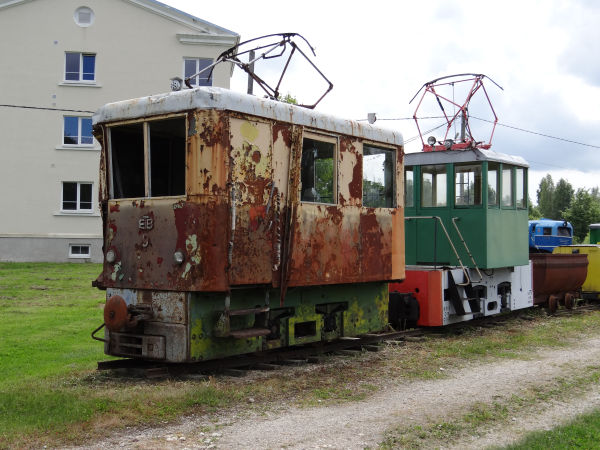
Old small narrow gauge electric locomotives used for mining purposes.
Picture at Lavassaare 10.6.2013 by Ilkka Siissalo.
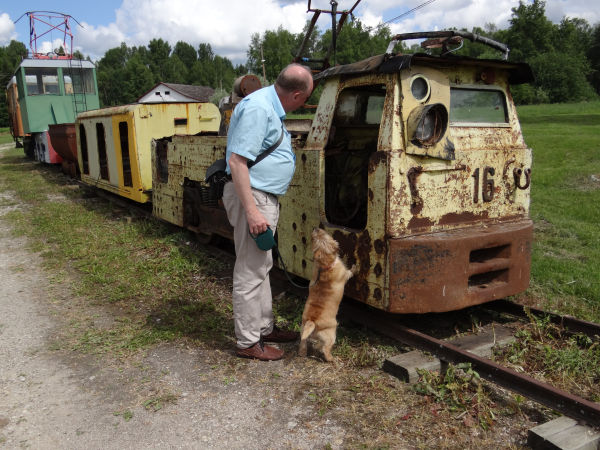
An old electric mining locomotive being inspected by train photographer Ilkka Siissalo and his train spotting terrier Mei.
Picture in Lavassaare 10.6.2013 by Sanna Siissalo.

